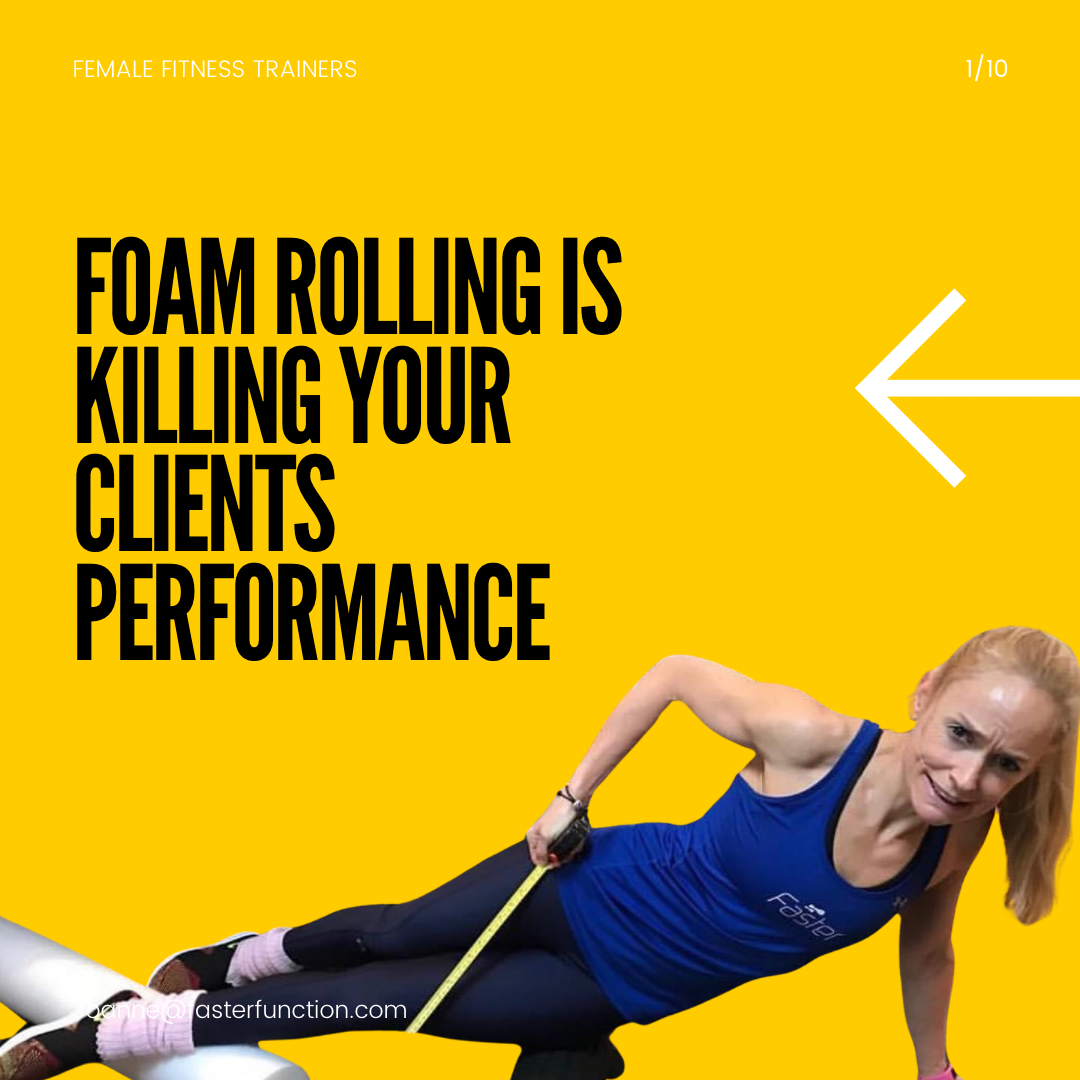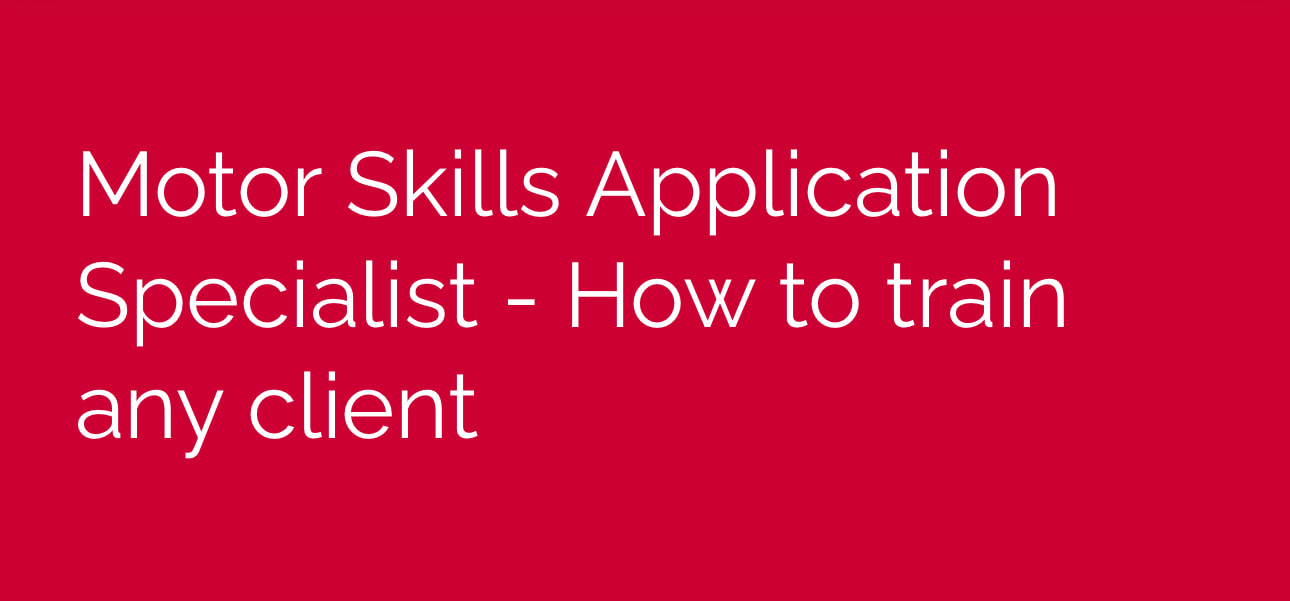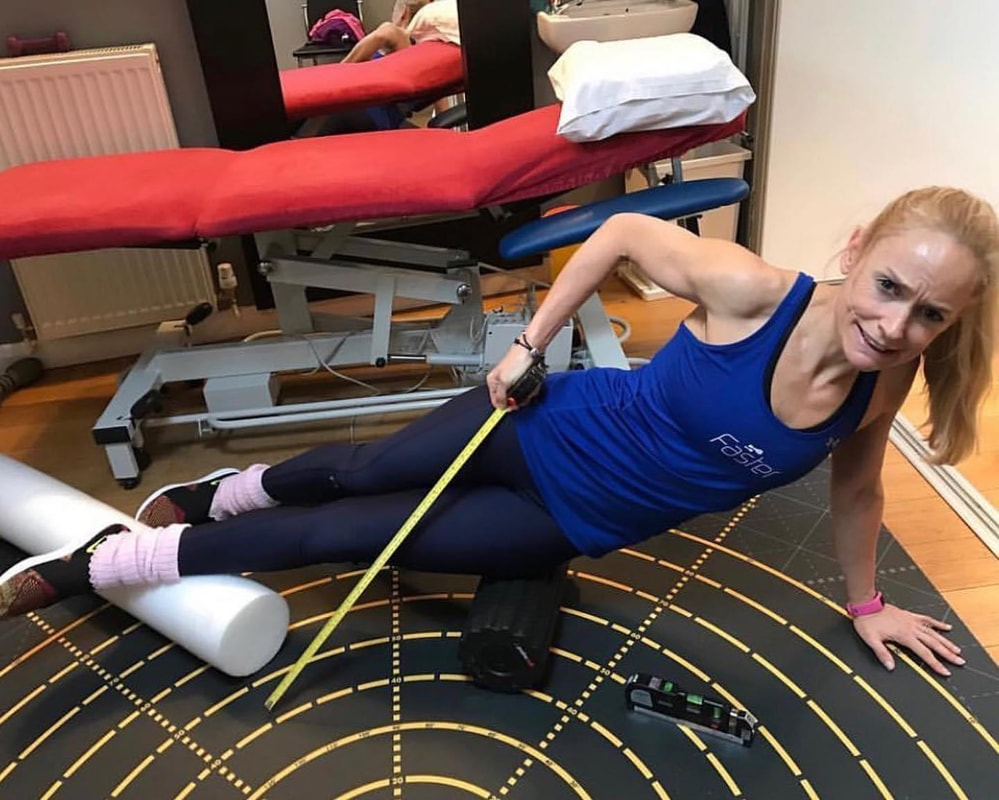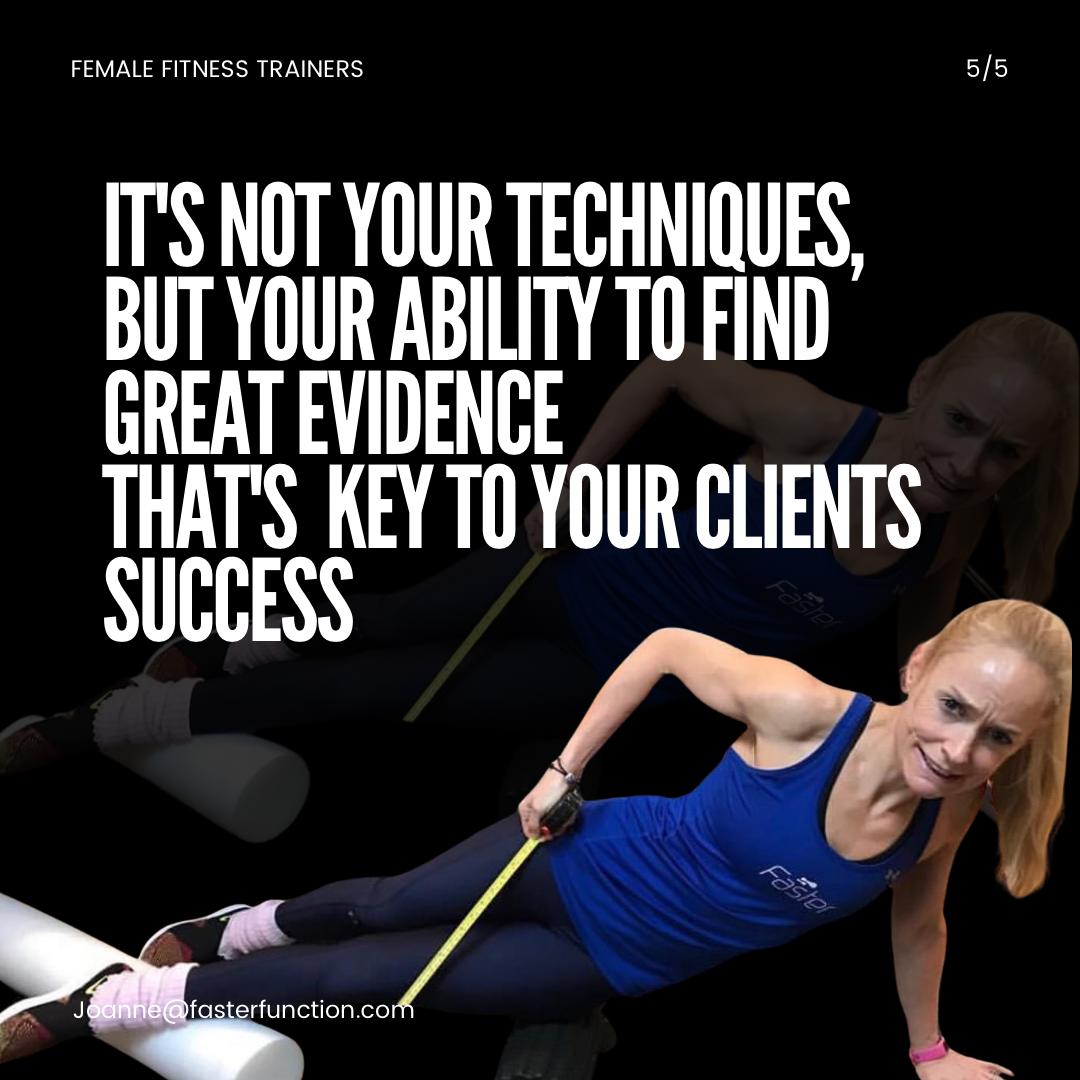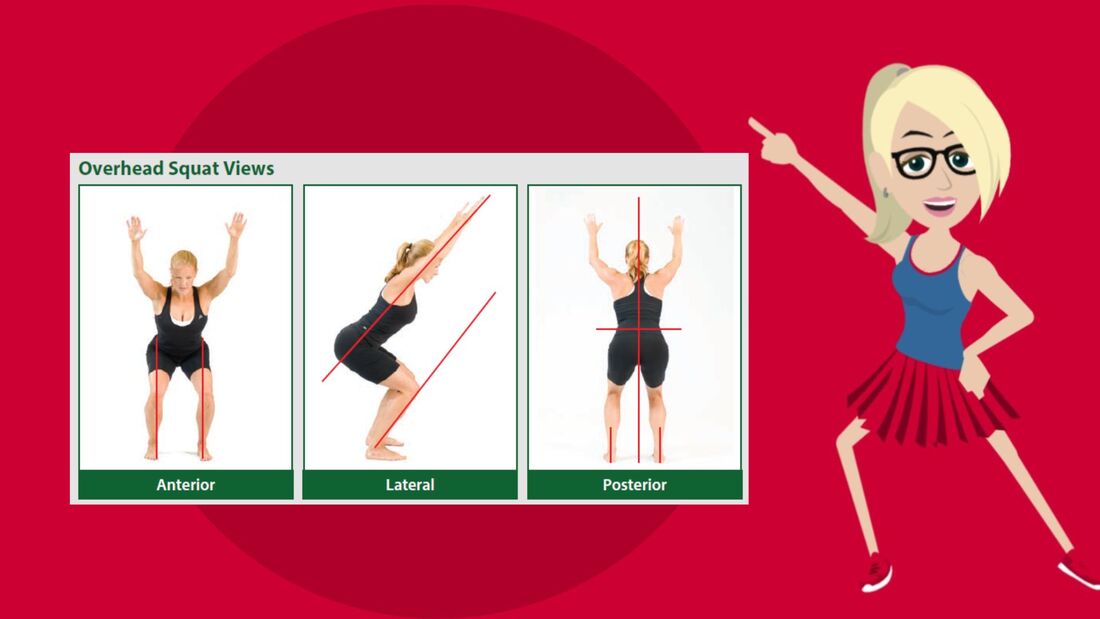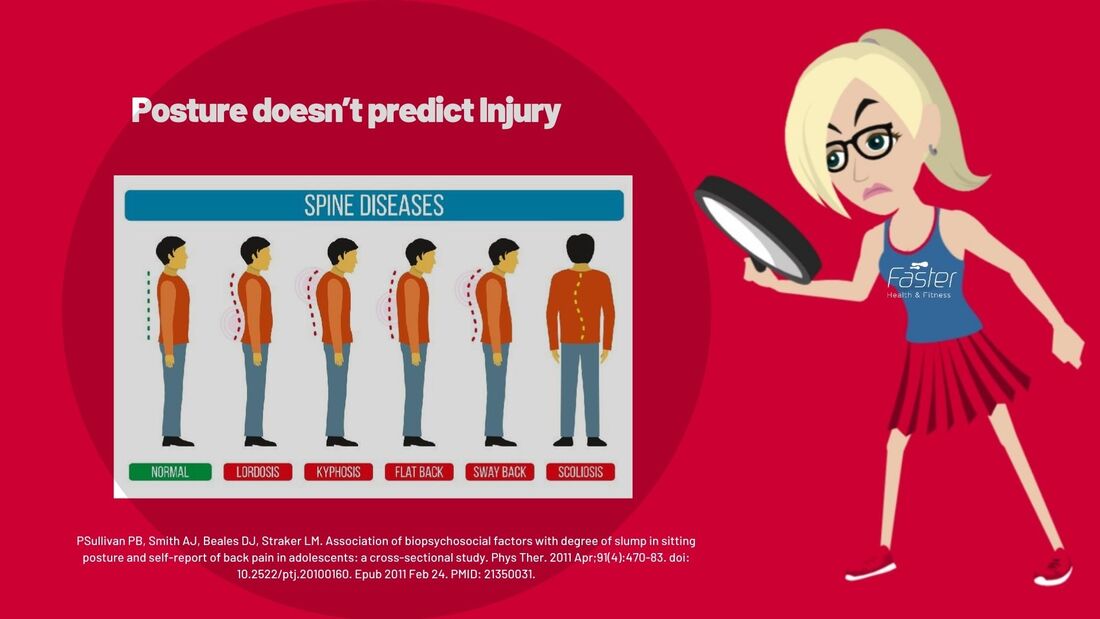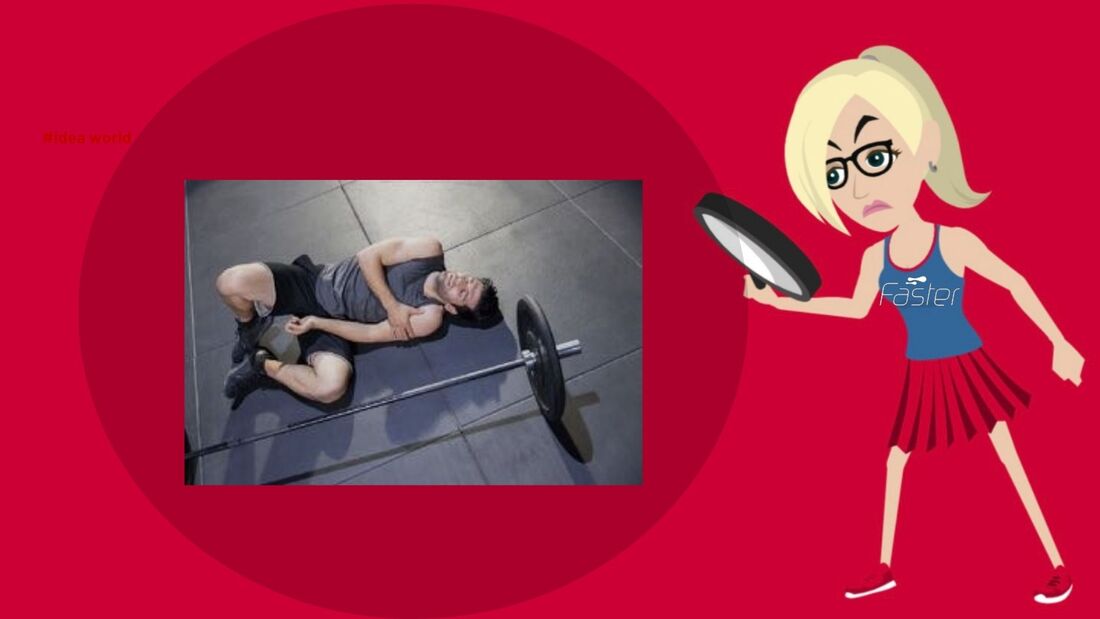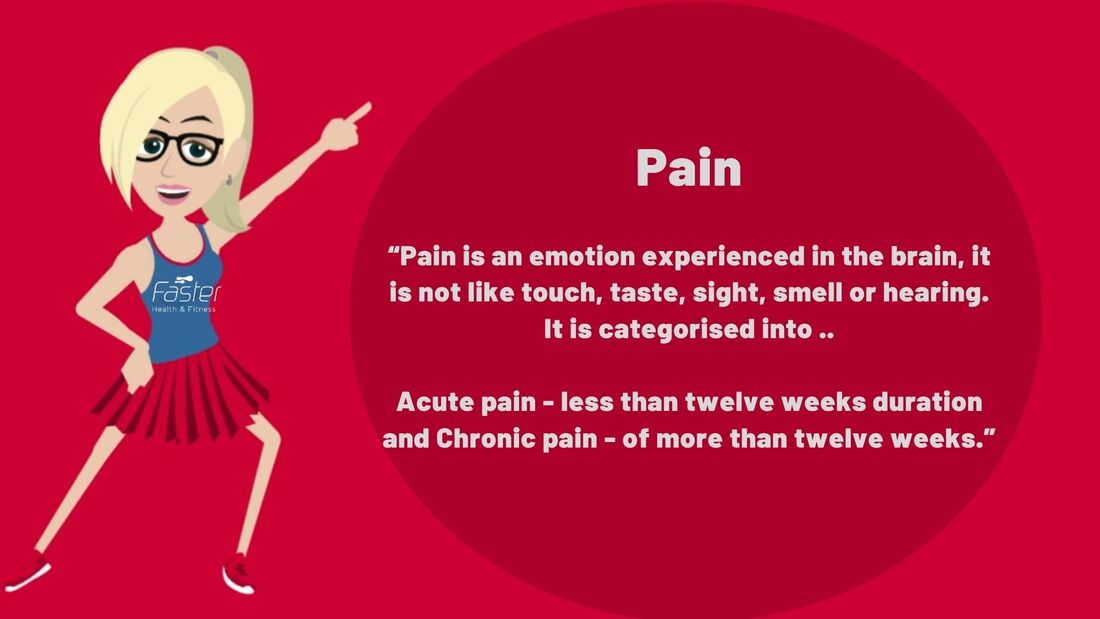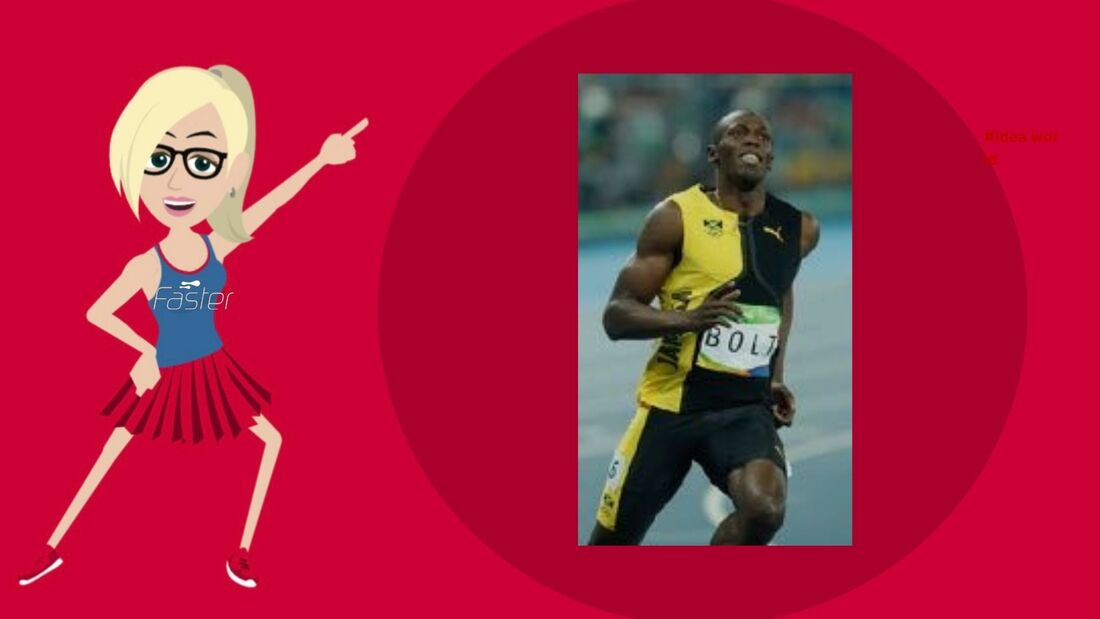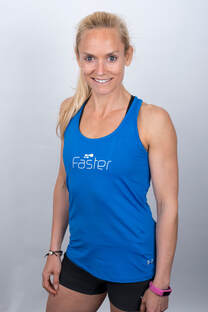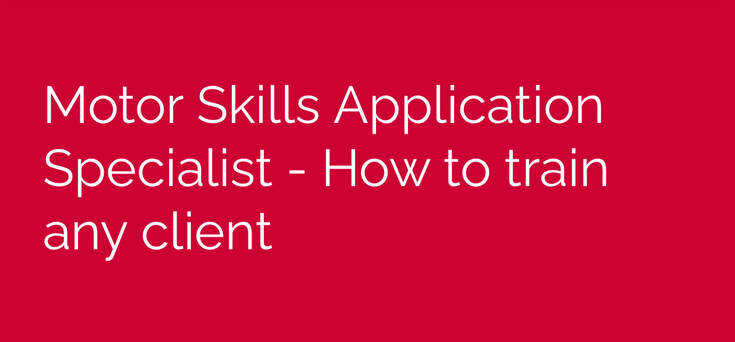Thank You for joining MeMost of us are in this industry to help our clients. Many of my students want to ensure they are doing everything they can to prevent injuries, and improve their clients performance. This desire to help can make it tempting to chase the latest trends and supposed breakthroughs. I wonder if I am the only one who, through my eagerness to help my clients, has become susceptible to various fitness gimmicks. I’ve been caught in the trap of constantly pursuing the next big thing, but now that has changed. For those who stay with me, I will be sharing what I have fallen for and why, I now question the practices I once endorsed. If you too, think you may have ever unwittingly followed a trend, only to discover it doesn't do what you once believed, read on. This is for you! My Experiences
Thankfully At this point i was introduced to the FASter process i now teach on Motor Skill Application specialistsLooking back, I think I thought I was ‘Jesus Jo’, scraping fascia, fixing everyone in Wimbledon with my spoon while I was waiting for my “Faktr tool” to arrive. (I was going to add a bad joke about spooning everyone in Wimbledon there, but I'm not doing that). Now as I sit down considering an ice bath, (I’ll make sure I tell everyone about it 😂) I realise I must be one of the most gullible on Instagram. But that's ok. It has led me to reevaluate the techniques I once used and in some cases taught. My perspective changed when Faster introduced me to their process, that I now teach on the Motor Skill Application Specialist ( MSAS) course. This helped me understand the importance of quality research, how to ask the right questions, ensuring my clients needs are always put first. Although I continue to get things wrong, this process helps me to move away from being emotionally attached to any particular technique. It helps me to let go of my ego and biases, ensuring I remain open to change. I want to be the trainer, mentor whose clients’ success is based on this process and not my techniques. It’s about finding better questions, not letting biases cloud my judgement. For those who have made it this far, let's ensure we are not killing our clients' performance. When looking at improving performance, it's vital we avoid vague terms often used to sell products. To do this, first, we must clearly define what aspect of performance we're focusing on. For example, if we’re looking to improve acceleration in running, it’s crucial to first understand the client's current level of experience, skill, biomechanics, and environmental factors, so we can measure and remeasure this. Once the specific area of performance is clearly defined, we can then consider questioning what influences it. In the case of acceleration, this includes: 1. Sequencing: of biomechanics: Ensuring movements are performed with the right order. 2. Power Generation: Generating the appropriate amount of power at the right moments during movement. 3. Combination of the above: The right Inter and Intra Muscular Contractions with the appropriate power for task, or Motor Skill 4. Understanding the role of mental state, confidence, experience, anticipation, and competition. 5. Fatigue Management: Response to various loads . speeds 6. Feedback: Task driven, video analysis, coaching Relying on techniques like foam rolling doesn't address these complex and interconnected factors. Foam rolling may offer short-term changes in the perception of range at a joint, but it does not contribute to the nuanced aspects of improving acceleration. The short-term benefits would cost your clients their long-term performance goals. Having the expertise of being a Motor Skill Application Specialist can be invaluable in this context. Such specialists are equipped with the skills to not only understand and apply the principles of motor learning and biomechanics but also to evaluate research and practices critically, and change when necessary. This ensures that the training methods used are not just based on trends or surface-level solutions, but on a deeper understanding of what genuinely improves performance. If you’ve been swayed by a fitness gimmick too, please share it in the comments. I’d love to know I'm not the only one! To find out more about the Faster Process taught on Motor Skill Application Specialist. Click on the link below . Thank You Joanne References These are meant as a starting point andI highly recommend doing your own research!
Journal of Sport and Health Scienc https://www.sciencedirect.com/science/article/pii/S2095254624000061 https://www.sciencedirect.com/science/article/pii/S2095254624000061.
0 Comments
Thank You for joining me You may, at some point, wanted to look for a way to help prevent injuries in clients. lMyself and my students have talked about the times we lay awake worrying about our client's movement patterns. Worrying about the thought of missing something that could cost them an injury. I was obsessed with posture correction and then muscular imbalances to help me eradicate dysfunctional movement. Many of the students who work with me, want to ensure they are doing everything they can to prevent injuries.Dysfunctional movement, is what people, who want to sell us the dream, the dream of being a healer, or guru install into us. They talk about preventing injury, and illness, correcting injuries and improving performance. Which all sounds great. But here’s the thing, just getting someone to move does all those things, so you get to give yourself a pat on the back, already! You’re already doing all of those things, but what we are talking about here is moving in optimum ways. This is where you may find the industry likes to overcomplicate matters, to sell techniques, and methods to clients. It preys on conscious trainers who need more confidence, more revenue or those with an ego, and I fell for it on three accounts! *I Don't think that's ethical on the client and I don't think it’s ethical on the trainer either. So let's define what a dysfunctional movement is and have a look at what we are doing when we think we are “fixing” it Define Dysfunctional Movement Dysfunctional Movement is often touted as a movement pattern that deviates from what is considered to be a 'normal' musculoskeletal function or movement pattern. NASM, who I trained with in the US for instance, describes it as a state involving muscle imbalances, decreased flexibility, or lack of core and joint stability. Many educators say that by identifying and correcting issues like muscle imbalances and asymmetries, we can prevent injuries, alleviate pain, and enhance performance. However, this may not be as straightforward as it seems. The terms used to describe these dysfunctions are vague and when you dig into the research (one of my favourite parts to teach on Motor Skill Application Specialist, "MSAS" as we call it!) lacks a standardised approach for measurement, which glosses over the complexities of human movement. This oversimplification neglects the unique and varied nature of individual movement patterns which makes it challenging to measure. How to measure dysfunctional movementMany different tests or screens claim to measure dysfunctional movement patterns, like, Functional Movement Screening (FMS), The Overhead Squat, and various postural assessments. These tests have a commonality, they all look for asymmetry, in an attempt to identify tightness or muscle weakness. However, these terms are vague and can overlook the nuances of individual movement patterns, skill, structure, emotion, and environmental factors. This raises questions about the predictive value and validity of such tests. It casts doubt on their ability to accurately determine what is deemed good or what is deemed bad movement that requires “fixing”. There is still so much to unpack: My hope is you stay with me. Asymmetry: What the tests help identify so you can correct it. These tests are looking for asymmetry or muscular imbalances: This term refers to a lack of balance between functionally opposite muscle groups, for example, the abdomen and back or between the left and right side. They claim that the originally balanced state of muscular tension is off-kilter, and some muscles are too tight or some not tight enough, leading to changes in strength and mobility. To define strength and mobility that would need another blog or you can join me on MSAS where we delve into what strength and mobility mean to unique clients. Now lets get back to measuring dysfunctional movement through a barrage of generic tests that all aim to highlight asymmetries, and muscular imbalances to prevent, predict an injury, or pain, or enhance performance. Before addressing these claims I think it may be good to first define posture. Posture: Both Static and dynamicStatic posture is a snapshot in time, it’s how the body maintains one alignment for a given period. Dynamic posture is how the body holds itself in movement, like when walking and running. I love seeing someone running who is hunched over because the old me would have been thinking, posture correction, weak, tight muscles, whereas now, I just smile and say “ You’re doing a great job! “ With that, they usually look up smile and begin to run more upright with more confidence. This little comment influences their mood, bringing them into a more upright, efficient running style ( dynamic posture). For those interested in learning more about programming to improve your running efficiency, top pace, acceleration or muscular endurance this is covered on MSAS. Back to the prediction of pain and injury: Using the research process taught on MSAS it would seem that posture in some cases can be correlated to pain. It is essential to remember that correlation does not equal causation. That's like saying “If you eat ice cream you are more likely to die of a shark attack” 😂. ( Nope when it’s hot weather more people eat ice cream and more people swim). However, posture does not seem to have a significant link to pain ( unless of course maybe you believe it does - that's another blog). In the past, I was fearful of clients with anatomical positions like a forward neck and was taught to label this as muscle stiffness ( here we go again ). Muscle stiffness can be described as the feeling of pain or tightness in your muscles. This would have then been blamed on a muscle being overactive with a notion to “fix”. However, the perception of feeling is influenced by the central nervous system, which encompasses factors such as emotion, mood, skill and so much more ( but that's for overthinkers who want to join our MSAS community). By the way, If a forward head or *text neck * was a thing to worry about, back in the day fishermen and stone merchants would have also been in trouble! How I like to describe posture (from the studies I have read), I would say it is about the body's best way of holding itself within the context of mood and skill. For example imagine your body’s posture when entering a doctor’s surgery expecting seriously bad news, compared to leaving with a clean bill of health. Our posture dynamically reflects our emotional state, skill, and the environment, not just structure. Recognising this can offer a more effective, and positive approach to unique movement behaviours. For those wanting a little more detail join me on MSAS. What appears to be missing so far when looking at correcting movement patterns with these generic tests is an understanding of the complexities of individual movement, and how we learn to adapt and refine our movement skills, known as motor learning. But let's get back to injury prevention for now. Injury and Injury Prevention An injury is when something breaks down. When something snaps or straightens too far or breaks. If it is a ligament tear, a ripped tendon or a broken bone unless you are a surgeon it has nothing to do with us. Most injuries are caused by being unlucky, for example, tripping on your weights in the gym so the first big tip is to make sure you put your weights away! If your client has had a previous injury and you are already doing a basic background check such as your Par-Q, and another patient on your back, you are already establishing the increased injury risks of your client in a more reliable way than many movement screens.Then there’s the risk of doing too much too soon, too much volume, and load, or lacking the skill to handle certain movements or speeds. It’s like someone at a buffet eating more than they can handle – in the gym, don’t let your eyes be bigger than your muscles. If someone says to me “It is for injury prevention”, my first response is “Which one specifically? “ From there we can head to the specific research. Testing movement patterns or muscular imbalances while in some cases could be a correlation to some injuries, from the balance of quality studies i read, it did not appear to be a causation. *It's worth a reminder that injury is different to pain. While it can lead to pain or pain can sometimes lead to an injury, they are not the same. Pain: Acute and Chronic Pain is a response to a sensation when your brain decides you are in danger whether is or isn't for another blog! *Before going any further: if a client has any unexplained pain, they should first seek a diagnosis from a medical doctor. The last thing we want is to change their experience of pain to discover it has cost them 3 months of critical treatment for a disease. Acute Pain: Something that normally happens with an injury, like that nightmare kid, skiing into my ACL ( now I’m triggered ). It can last for anything up to 12 weeks. Anything after that is usually considered chronic. Chronic pain: is the type we more often encounter in fitness settings. To ensure we are on the same page, pain is a response to a sensation, where your brain has decided you are in danger. “You can have pain with damage and where there is no potential damage" The British Pain Society. You can dig into injury and pain in more depth on Motor Skill Application Specialist ( MSAS) where we have more time, videos and really useful ebooks on this topic. While there may be a correlation between muscle imbalances, and pain, it is not a causation or predictor of pain or injury. Phew, and breathe, we don't need to lose sleep over it! Many athletes are asymmetrical. Interestingly instead of this being detrimental to their performance, it seems it may well be advantageous! Improving PerformancePerformance is an area we need to get right. Most trainers want to ensure their unique client can execute a specific task, to the best of their ability in a way that is challenging enough to get optimal adaptation and results. It is often measured by criteria such as strength, speed, skill level, and endurance. To get more nerdy about how you can improve performance, getting to the right inter and infra muscular contractions, all happen in the right sequence with the appropriate power you may want to join other trainers like you on MSAS. There, we will explore how to target your client's training, towards their specific needs, such as increasing muscle strength for their deadlift, power for their punch, or over-head squat. Learning the Faster process to help refine skills through motor learning and skill development can lead to enhanced performance in any given activity. Some sports require a move synchronised movement pattern, for example, powerlifting as any deviation from keeping the bar parallel to the floor will require more muscle activation, being less efficient. However some sports require athletes to have asymmetry, and it would seem this is not at a cost to their performance! Usain Bolt has a unique running style and he's pretty quick! *This is an N=1, so you would be right to check the research on this yourself! So you may not need to worry about making your client symmetrical ( unless of course they are a bikini model and would get their “scores” marked down if they had one glute or calf bigger than the other ) certainly don’t worry on an account of preventing pain or injury! RecapMy hope is that this blog helps to challenge the fitness industry's traditional beliefs or reasons for measuring muscular dysfunctions and posture. It would seem instead of focusing on correcting, we could adopt a more nuanced understanding of human movement. Using principles of motor learning to help recognise our body's capacity for adaptation, we can enhance our client's fitness practices in a more positive, effective manner. The body adapts to various environmental challenges. For example, a football player learns to adjust their movements on different playing surfaces; this adaptability is a product of the body’s dynamic response to external factors, which can be crucial for skill development, efficiency and performance. Using the simple research process from MSAS enabled me to write this blog, if you would like to find out more about this process or more about how MSAS can practically help you and your clients, follow the link below. Having the tools to be a great researcher means you can critically evaluate any technique and method : without taking my or any others persons word for it!Here are some examples of techniques I've used and then learnt to critically evaluate. I would recommend doing your own research. 1. Corrective Exercises: a concept based on the thought that natural movement variations are inherently wrong and need fixing. It’s a flawed argument that overlooks the uniqueness of individual movement 2. Foam Rolling and Myofascial Release: While they may offer short-term changes to the central nervous system, this is at a long-term cost to performance. This creates reliance on techniques that can detract from effective movement skill development. 3. Perfect’ Posture: The pursuit of an idealised posture is a myth with no solid backing in research. It can lead to a harmful fixation on unattainable standards, causing more stress than benefit. 4. Movement Screening: Often lacks the nuance to account for individual variability in movement. It can lead to overdiagnosis and an unnecessary focus on ‘correcting’ non-issues. It should not be used to attempt to predict an injury. 5. PNF Stretching: While it can create a short-term increased range of movement, the belief in its ability to ‘correct’ deeper muscular issues is exaggerated and not supported by robust evidence. 6. Pilates and Yoga: I"m a big fan of moving, while yoga and Pilates are beneficial for many things including general health, the claims of ‘fixing’ musculoskeletal issues are overblown and not backed by solid research. 7. Chiropractic and Osteopathic Manipulations: Not based on sound scientific research. They can lead to a dependency on short-term fixes rather than addressing long-term movement health. 8. Gait Retraining: The idea that everyone’s gait needs fixing is a flawed premise. It overlooks the natural variability and complexity of individual gait patterns. 9. Thomas Test (or other movement tests done lying down): Commonly used to assess muscular imbalances, claimed hip flexor tightness, but its relevance to functional movement is questionable. Conducted in a lying-down position, it fails to replicate the demands of most activities. (Reference: González-dela-Flor et al. (2023)) You’ve made it this far, thank you! This could show that you are dedication to your clients or maybe, that you want to tell me how wrong I've got this! My hope is this blog helps build your confidence in what you are already doing well. That it helps remove some of the stress and anxiety in training your clients, by questioning a concept of needing to "fix" at the risk of taking away your clients self efficacy in movement. Either way, you’re exactly the kind of student who thrives on MSAS. If you’re keen to explore how motor learning, learning in abundance, and dynamic systems can enhance your clients’ experience, or how to learn more about the process of getting to the balance of best scientific evidence, join me now on MSAS. If you think I have missed anything I would love to hear from you in the comments below. Joanne References : *Dhawale AK, Smith MA, Ölveczky BP. The Role of Variability in Motor Learning. Annu Rev Neurosci. 2017 Jul 25;40:479-498. *Shi LZ, Zhao ZH, Yang ZZ, Li ZJ, Shen XJ. [A study of the correlation between low back pain and occupational stress in coal miners]. Zhonghua Lao Dong Wei Sheng Zhi Ye Bing Za Zhi. 2018 Nov 20;36(11):849-852. Chinese. doi: 10.3760/cma.j.issn.1001-9391.2018.11.014. PMID: 30646652. * Chimera NJ, Warren M. Use of clinical movement screening tests to predict injury in sport. World J Orthop. 2016 Apr 18;7(4):202-17. * Lederman E. The myth of core stability. Journal of Bodywork and Movement Therapies, 2010; 14(1): 84-98. * Latash ML. Synergy. Oxford University Press, 2008. * Moseley GL, Butler DS. Fifteen years of explaining pain: The past, present, and future. Journal of Pain, 2015; 16(9): 807-813. * Bialosky JE, Bishop MD, Cleland JA. Individual expectation: An overlooked, but pertinent, factor in the treatment of individuals experiencing musculoskeletal pain. Physical Therapy, 2017; 97(9): 893-903. * British Pain Society. Understanding Pain. * National Health Service (NHS). Musculoskeletal Health. * Reference: Cook, G., Burton, L., & Hoogenboom, B. J. (2006). "Pre-participation screening: The use of fundamental movements as an assessment of function - Part 1." North American Journal of Sports Physical Therapy. * MacDonald, G. Z., Penney, M. D. H., Mullaley, M. E., Cuconato, A. L., Drake, C. D. J., Behm, D. G., & Button, D. C. (2013). "An acute bout of self-myofascial release increases range of motion without a subsequent decrease in muscle activation or force." Journal of Strength and Conditioning Research. * Barrett, E., O'Keeffe, M., O'Sullivan, K., Lewis, J., & McCreesh, K. (2016). "Is thoracic spine posture associated with shoulder pain, range of motion and function? A systematic review." Manual Therapy. * Dorrel, B. S., Long, T., Shaffer, S., & Myer, G. D. (2015). "Evaluation of the Functional Movement Screen as an Injury Prediction Tool Among Active Adult Populations: A Systematic Review and Meta-analysis." Sports Health. * Sharman, M. J., Cresswell, A. G., & Riek, S. (2006). "Proprioceptive neuromuscular facilitation stretching: Mechanisms and clinical implications." Sports Medicine. * Wells, C., Kolt, G. S., & Bialocerkowski, A. (2014). "Defining Pilates exercise: A systematic review." Complementary Therapies in Medicine. * Ernst, E. (2008). "Chiropractic: A critical evaluation." Journal of Pain and Symptom Management. * Cheung, R. T. H., & Davis, I. S. (2011). "Gait retraining in runners: In search of an evidence-based practice." Journal of Science and Medicine in Sport. * González-de-la-Flor, Á., et al. (2023). "Validity and reliability of a new hip flexor muscles flexibility assessment tool: The reactive hip flexor (RHF) test." Physical Therapy in Sport. * Roffey DM, Wai EK, Bishop P, Kwon BK, Dagenais S. Causal assessment of awkward occupational postures and low back pain: results of a systematic review. Spine J. 2010 Jan;10(1):89-99. doi 10.1016/j.spinee.2009.09.003. Epub 2009 Nov 11. PMID: 19910263. * Myer GD, Kushner AM, Brent JL, Schoenfeld BJ, Hugentobler J, Lloyd RS, Vermeil A, Chu DA, Harbin J, McGill SM. The back squat: A proposed assessment of functional deficits and technical factors that limit performance. Strength Cond J. 2014 Dec 1;36(6):4-27. doi: 10.1519/SSC.0000000000000103. PMID: 25506270; PMCID: PMC4262933.https://www.ncbi.nlm.nih.gov/pmc/articles/PMC4262933/ Joanne GrovesIf you're a trainer who's tired of delivering the same generic sessions you see plastered all over social media, and you're eager to ensure that every exercise you prescribe has a unique, purposeful intent, then MSAS is for you! I'm thrilled to invite you to join me on our upcoming 12-week group motor skill application specialist course. I'm always excited to witness the impact this course has on trainers and their clients success. Thank You for reading, I’m Joanne, a proud wife and mother to two amazing children. With over 28 years in the fitness industry, I've grown into roles including Course Director, International Master Trainer, Presenter, and an accomplished author with Faster Health and Fitness. My passion lies in guiding trainers and business owners to deliver exceptional, evidence-based experiences your clients rave about.
|
Joanne Groves.Presenter, Educator, Author with Faster function with over 20 years’ experience in the fitness industry . Archives
January 2024
Categories
All
|
